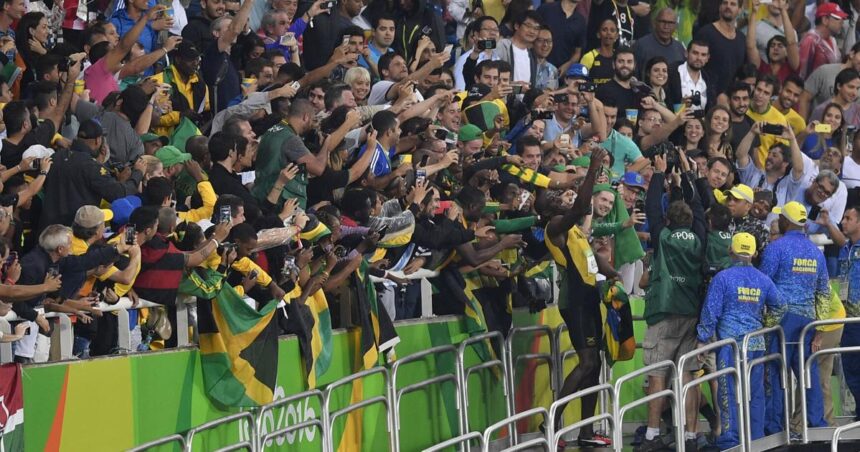Any athlete with Olympic dreams knows the feeling of lungs burning, arms and legs turning to jelly, as they near the closing moments of another grueling race or excruciatingly close match. For that last shot of adrenaline, they often tap into the energy provided by the roaring crowd.
At the last two Olympics — one summer, one winter — that crowd did not exist due to the COVID-19 pandemic. In Paris this summer, once again, all those fans, family members and the burst of energy they bring to all the fun and games will be back.
The Paris Games will celebrate the return to “normal” after a stretch when host cities turned into closed-off shells of themselves, depriving those who had earned their way inside the so-called Olympic “bubble” of a true Olympic experience.
“I had a lot of athletes tell me that Tokyo was one of their worst Games,” said American skateboarder Jagger Eaton, who made his Olympic debut in 2021 and will return this year. “And I was like, ‘I love it here.’ I didn’t know any better.”
People are also reading…
No more masks
Eaton and hundreds more returning Olympians will no longer have to wear masks, submit to daily swabs up the nose or spit into plastic tubes to detect signs of COVID. Separated groups of COVID “cohorts” and quarantines for those suspected of carrying the virus are also a thing of the past.
“I heard horror stories, a lot of horror stories,” said Paralympic sitting volleyball player Nicki Nieves, whose trip was canceled when she tested positive for COVID three days before the team left for Tokyo. “I’m excited we’re getting the fans back.”
Jagger Eaton, of the United States, competes in men’s street skateboarding during the 2021 Tokyo Olympics. At the last two Olympics — one summer, one winter — that crowd did not exist due to the COVID pandemic.
No more empty seats
At the Winter Games in China two years ago, hundreds of fans were bused five hours away to the action-sports venue to watch snowboarders while banging together noisy “thundersticks” and wearing masks in the 0-degree chill. Almost no fans living outside China could attend.
The year before at the Summer Olympics in Tokyo, the spectators were mostly coaches, officials and volunteers, and they filled only a small fraction of the seats.
When Marcell Jacobs of Italy earned the title of “World’s Fastest Man” by winning the 100 meters, you could hear his celebratory shouts echoing across the near-empty 68,000-seat Olympic Stadium. It was a far cry from the stadium-wide, selfie-taking reggae-fests that broke out in years past when Usain Bolt worked the crowds after crossing the line first.
Hours after the finish in the 100, members of the Italian media joined Jacobs and his teammate, gold-medal high jumper Gianmarco Tamberi, on the track to take part in a celebration that would’ve normally included hundreds of friends and relatives.
“The stadium was super, I guess, quiet and just a little bit empty,” said American Paralympic sprinter and long jumper Jaleen Roberts, who encountered similar conditions a few weeks after the Olympics. “It also kind of helped with the nerves a little bit. But I’m excited for what will be a different kind of adrenaline with people in the stands.”
For decades, athletes have told stories about how having fans in the stands have helped them push to the finish. Rower Michelle Sechser calls the final 250 meters of her race, with the fans roaring from the grandstand, “the final crescendo of the sprint.”
“When it’s time to hit the sprint for the race, knowing that roar of the crowd will be there — it’s always extra motivation when you hear them,” Sechser said.






